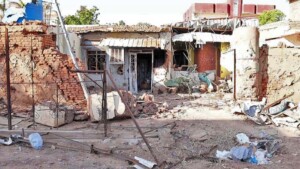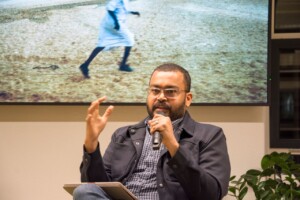El Niño could affect 4.2 million Sudanese in 2016
In Sudan, because of the drier-than-normal conditions in the southern part of the country, deterioration of the already unstable food security situation is expected and could affect up to 4.2 million people in 2016, the World Health Organisation (WHO) says in its latest report on El Niño.
In Sudan, because of the drier-than-normal conditions in the southern part of the country, deterioration of the already unstable food security situation is expected and could affect up to 4.2 million people in 2016, the World Health Organisation (WHO) says in its latest report on El Niño.
In its latest report, El Niño and Health: Global Overview, the WHO states that El Niño 2015-2016 is currently affecting the health of millions of vulnerable people in the Horn of Africa, southern and eastern Africa, South Pacific, Central America and South Asia.
The El Niño phenomenon affects rainfall patterns and temperatures in many parts of the globe, most intensely in the tropics with significant impacts on human health.
In Sudan, a significant rise in food insecurity and malnutrition is expected for vulnerable populations, especially among small-scale farmers and pastoralists, who comprise the bulk of the country's rural poor, the UN Office for the Coordination of Humanitarian Affairs (OCHA) in Sudan reports in its latest weekly bulletin.
Disease
Many Sudanese are particularly vulnerable to disease outbreaks and is currently undergoing prolonged measles and dengue outbreaks. Changes in the pattern of vectors caused by El Niño could further lead to an increase in vector-borne diseases such as malaria and viral haemorrhagic fevers (VHFs) endemic in Sudan.
It is also likely that decreased water quantity and quality will lead to an increased incidence of water-borne diseases such as cholera and other diarrhoeal diseases, OCHA warns.
If not mitigated, the impact of El Niño is likely to lead to population displacement, disruption of health service delivery, and lack of access to health care, according to the WHO. Investing in mitigation measures with a focus on community-based initiative is one of WHO’s current priorities.
Conflict-affected areas
OCHA also reports that according to the most recent Food Assistance Outlook Brief for the period of January-July 2016 by the Famine Early Warning Systems Network (Fews Net), needs will be higher than usual for households affected by persistent conflict in South Kordofan, Blue Nile, and Darfur.
Fews Net warns that needs will also be unusually high for very poor households in areas where the rainy season was very dry, particularly in parts of North and South Kordofan, eastern Sudan, and North Darfur.











 and then
and then